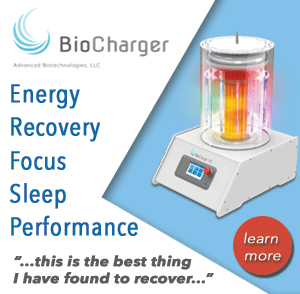Details
CBD is in water-soluble nano-emulsion form, increasing bioavilability.
Made with full spectrum oil including unique terpenes that contribute to pain relief.
Full Spectrum Zero-THC
The Science of Cannabis in a Symbiotic Relationship with the Endocannabinoid System V1©
In the late 1980s, scientists would discover the Endocannabinoid System within the human body. Now, this would lay waste to claims for decades that cannabinoids CBD had no beneficial purpose for human consumption.
In 1992, it was discovered that the endocannabinoid system produces an endocannabinoid within the brain called anandamide. This internal cannabinoid, which was discovered by Dr. Raphael Mechoulam at the Hebrew University in Jerusalem, binds to CB1 receptors in the brain and nervous system and CB2 receptors in the immune system. Many Medical professionals and researchers have identified a shortage of endocannabinoids as a condition called endocannabinoid deficiency. It is now becoming widely known that a deficiency of these molecules, which are increasingly understood to be a crucial to good health and homeostasis, may lead to a variety of diseases related to the immune and nervous systems. These conditions may often involve seizures, the inducement of inflammation and pain, along with a myriad of diseases.
The reason CBD derived from the multi-purpose Hemp plant works so well for so many diseases and conditions, is the Endocannabinoid System, a central component of the health and healing of every human and virtually every animal.
CBD from Hemp
Although hemp is a close cousin to a psychotropic plant called marijuana, it should not be confused as there are only <0.3% of THC in hemp or in the case of Agora CBD, 0.00%. In comparison, medical marijuana produces anywhere between 5-20% THC on average, with prize strains tipping the scale at 25-30% THC. There are different varieties of cannabis however for the purpose of this discussion we will be talking about only one, CBD from hemp.
Hemp is believed to be one of the oldest domesticated crops. Throughout history, humans have grown different varieties of cannabis for industrial and medical uses.
Hemp plants were grown by early civilizations to make a variety of foods, oils and textiles, such as rope and fabrics.
THE ENDO-CANNABINOID SYSTEM
The endocannabinoid system produces its own cannabinoids which is the reason it exists. This system is supplemented when a person/host consumes cannabinoids and in particular, CBD. The CBD molecules activate particular cannabinoid receptors. These receptors, called CB1 and CB2, work like a lock and key when flooded with cannabinoids such as after a patient ingests concentrated CBD oils or concentrated CBD in other forms. This concentration has been shown to increase the viability and enhancement of homeostasis.
The ENDOCANNABINOID SYSTEM -- An Overview:
The endocannabinoid system, or ECS, influences multiple physiologic processes. This intricate system modulates energy intake as well as nutrient transport, metabolism and storage. The ECS regulates these processes through endogenous ligands such as anandamide, and 2-arachidonyl glycerol, and the CB1 receptor. CB1 receptors are located in the brain, digestive tract, muscle, and adipose tissue. Integration of these central and peripheral ECS components is achieved through neuronal and hormonal signaling.
Obesity, particularly abdominal obesity and the associated cardiometabolic complications, are critical areas of investigation. The ECS system helps to regulate the central control of energy balance and peripheral metabolic processes, both of which may contributetocardiometabolicriskfactors.
Endocannabinoid Biology: Within the brain, CB1 receptors are among the most abundant G-protein coupled receptors. However, in contrast to classical signaling, where information travels from pre to postsynaptic neurons, the ECS uses retrograde signaling, the information travels from post to presynaptic neuron. When an action potential reaches the axon terminal, membrane depolarization triggers the release of glutamate. Glutamate binds to postsynaptic glutamate receptors, inducing calcium channels to open. During periods of intense neural activity, calcium accumulates in the post-synaptic neuron. This calcium buildup causes the synthesis and release of endocannabinoids from membrane lipids. Diffusing across the synaptic cleft, the endocannabinoids bind to the CB1 receptor, activating the G-protein. Activation influences ion flow. The result; suppression of presynaptic neurotransmitter release. Endocannabinoids are subsequently taken back into the cell and enzymatically degraded. In addition to acting as neural messengers, endocannabinoids mediate paracrine and autocrine signaling in adipocytes, hepatocytes, and other cells.
Endocannabinoid System: appetite, motivation and satiety
The endocannabinoid system activity in the central nervous system regulates food intake. For example, ECS stimulation by hunger and fasting signals stimulates appetite, and increases the palatability of food. Endocannabinoids slow gastric emptying and GI transit, appear to stimulate secretion of ghrelin, a neuropeptide that increases appetite and food intake. After eating, cholecystokinin in the duodenum triggers satiety signals. Subsequently, ECS activity is decreased through suppression of CB1 expression. An increase in the adipocity hormone leptin decreases endocannabinoid levels in the hypothalamus and decreases food intake.
Endocannabinoid System: peripheral metabolic regulation
ECS regulation of peripheral metabolism influences energy balance. Stimulation of the ECS increases food intake and adipocity. Conversely, blocking CB1 receptors reduces food intake and adipocity. In the liver, ECS stimulation can lead to lypogenesis through the activation of hepatic lipogenic enzymes, and increased fatty acids synthesis.
Endocannabinoid System: dyslipidemia and glucose homeostasis
Chronic stimulation of the ECS is associated with dyslipidemia. Activation of CB1 receptors increases expression of SREBP-1c, a lipogenic transcription factor, and increases fatty acids synthesis. SREBP-1c increases production of lipogenic enzymes, ACC-1, and fatty acid synthase (FAS). Increased fatty acid synthesis can lead to production of large triglyceride-rich VLDL (TG-rich VLDL). Large triglyceride-rich VLDL sets the stage for the atherogenic lipid profile of small dense LDL, decreased levels of atheroprotective HDL, and overall increases in cholesterol and triglyceride levels. Adiponectin, another hormone secreted by adipocytes, regulates lipid and glucose metabolism.
Adiponectin is believed to regulate fatty acid oxidation in muscle and liver, thus improving insulin sensitivity. CB1 receptors stimulation in adipocytes reduces adiponectin, while CB1 blockade increases adiponectin synthesis.
Metabolic dysregulation leads to a constellation of symptoms including abdominal obesity, atherogenic dyslipidemia, hypertension, insulin resistance, prothrombotic state, and pro-inflammatory state thus, CBD derived from the multi-purpose hemp- plant And the wide spread benefits for so many diseases and conditions provided through the endocannabinoid system (ECS), demonstrates that Cannabis could very well be mankind’s most symbiotic plant. A
BRIEF HISTORY
Hemp–NOT to be confused with its close cousin, a psychotropic plant called marijuana–has been used for thousands of years in human history for a variety of purposes, medicine, foods, oils, art canvases, clothes, paper, and much much more.
Hemp farming has had a long history in the United States. In fact, seven different presidents were known to have farmed hemp: George Washington, Thomas Jefferson, and Andrew Jackson, to name a few. Hemp has been used extensively as recently as World War II, when it was cultivated in Kentucky and midwestern states to make uniforms, canvas, and rope. Up until the 1930’s, hemp was a very powerful “cash crop” in America.
In the 1937, hemp underwent a massive rejection due to the greed of three of the richest Americans in history who spent millions of dollars to ban hemp from everyday citizens through political means. Publishing magnate William Randolph Hearst, and an industrialist from Dupont along with U.S. Secretary of treasury Andrew Mellon joined together to make hemp illegal. Why? Dupont was working on a new process to make paper from wood and meanwhile Hearst was the largest owner of forests in the U.S. and paper is of course made from wood. Additionally, both Hearst and DuPont had financial interests in synthetic fiber and petroleum which competed directly against hemp paper and other natural hemp products. They pressured Andrew Mellon and the government to make the possession of transfer and hemp in the United States illegal without a permit. They made sure that permits were very hard to find. Everyday Americans went along with this because Hearst and Dupont associated hemp with marijuana even though the two are entirely different. For the next 70 plus years, hemp was shut off from everyday Americans.
In 1992, the first suspicion of the endocannabinoid system started to unfold. This system was found by Raphael Mechoulam as well as NIMH researchers William Devane and Dr. Lumir discovered the Endocannabinoid System (ECS) in the human body During the 1980s. These scientists discovered anandamide (a fatty acid neurotransmitter produced within the human brain. Anandamide was the first naturally occurring endogenous cannabinoid, or endocannabinoid. Anandamide binds to CB1 receptors in the brain and nervous system, and CB2 receptors in the immune system. Recent research suggests that deficiencies of these molecules may be associated with a variety of immune and nervous system disorders such as seizures and inflammation. New scientific research is now supportive of the claim that cannabidiol (CBD) is beneficial for human consumption. In February 2014 all that changed when farm bill 2040 was signed. It contained a special amendment to legalize a production of industrial hemp in the United States.
Functions of the Endocannabinoid System
The endocannabinoid system is perhaps the most crucial biological system involved in creating and maintaining optimum homeostasis in your body. Endocannabinoids and related CB1 and CB2 receptor sites are produced and found nearly everywhere in your body. They are in your brain, tissues, organs, glands, and cells. In each region, your endocannabinoid system performs countless functions with one sole purpose, homeostasis. By consuming cannabidiol (CBD), homeostasis begins to occur in your body at an unprecedented speed on many levels. Fundamentally, CBD provides internal balance for human anatomy despite wildly accelerating changes and stress in your external environment.
One example is relief from inflammation and pain from chronic or acute injury while incurring no tolerance or dependence. CBD minimizes pain and damage caused by an injury. CBD prevents your body from doing too much of a good thing when injured by inhibiting your body’s immune reaction from growing out of control. This is done by inhibiting activators such as histamine and C-reactive protein (CRP), therefore limiting inflammation. At the same time, CBD throttles your nerve cells from excessive synaptic firing, acting as a potent pain reliever.
Another example of homeostasis caused by cannabinoids is its powerful effect on cancer and tumors. Cannabinoids optimize normal cells while hunting down and killing cancer and tumor cells. Malignant cells produce a high amount of a compound that CBD is attracted to. This causes an unhealthy cell to die, leaving only healthy cells and enhancing your body's homeostasis at a whole new level.
CBD is well researched for its anti-convulsant, anti-inflammatory, anti-oxidant, anti-psychotic, and immune system properties. CBD users have lower levels of C-reactive protein which is directly connected to cardiovascular disease and stroke. CBD is known to help with Alzheimer’s, arteriosclerosis, bowel disorders, cirrhosis, depression, diabetes (type 1 and 2), hypertension, metabolic syndrome, nausea, neuropathic pain, osteoarthritis, rheumatoid arthritis and much more, all without causing tolerance or dependence. As a practitioner understanding the endocannabinoid system and CBD, you can cross over to a new paradigm of healing, promoting health, and preventing disease. We encourage you to browse the Internet and read the thousands of reputable studies about the endocannabinoid system and CBD published.
WHY YOU SHOULD USE AGORA CBD
Unlike chemically derived CBD, we do not remove just the cannabinoid from the plant. Agora CBD is extracted by a chemical-free process that invokes all of the plant’s natural synergy. We extract the natural fatty acids, waxes, minerals, vitamins, terpenes, and flavonoids to create a potent phyto-rich, full spectrum, “as found in nature” supplement for your body. We call this the “entourage effect,” which provides you the potential of CBD’s most natural state. We are convinced this form of CBD is the most efficacious and takes advantage of the whole plant interacting with your endocannabinoid system, just as nature intended.
IS CBD LEGAL?
Agora CBD is 100% legal anywhere in the USA. This is because Agora CBD is derived from hemp. The DEA acknowledges that CBD from hemp is legal in the USA, enacted under the 2014 US Farm Bill. This is because “industrial hemp” is excluded explicitly from the drug scheduling definition of marijuana in Section 7606 of the Farm Bill.
HOW LONG DOES CBD TAKE TO WORK?
This certainly varies from person to person as do the dosages. Most people take 10mg per dosage and this could be a 10mg gel cap or a dropper full of oil which comes in a 1-ounce bottle labeled 250 which is also 10mg. We have seen and heard that most people experience growing relief within as little as 20 minutes and as late as one week. We advocate that you have you take this smaller dosage at the beginning, and work your way up if needed.
Cannabidiol (CBD)
Zero-THC
Inactive Ingredients:
Medium Chain Triglycerides from Hemp Seed Oil
(Approx. CBD yield per dropper: 10mg)
1-2 dropperfuls daily






